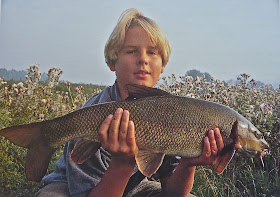We were all dreaming of sunny springtime days of tench and crucian fishing when we woke to the present coronavirus nightmare. It then dawned that the health crisis might last until October and instead of that first summer cast for tench, it might be for an autumn barbel.
So to cheer our Wimborne club members up I thought it would be rewarding to go down memory lane and remind ourselves of the classic tench and crucian lake that we have created during this past three years. This was the challenge as we began digging ...
Mud, mud, not so glorious mud was the start of the project, for we had to remove years of silt from what was once a trout fishing lake. Following are the before and after pictures ...
Into this beautiful tranquil pool and with the help and support from the EA’s Culverton Fish Farm and the Angling Trust, we stocked with some cracking tench and small crucians from various sources ...
... and as chalk stream river water flows through and encourages thick weed growth, they have all grown fat and bred profusely. The babies are numerous and cute as fish can be.
We had to protect these valuable gold bars so built an otter fence around the lake and ran strings over it to protect them from cormorant predation.
Suitably protected, the fish have grown fast, the crucians to a pound and a half and the tench to approaching four pounds, which given the thick weed is quite big enough.
So our members and guests have enjoyed some idyllic angling in this deepest Dorset countryside, surrounded by fields and serenaded by bird song. I've even managed a few battlers myself ...
So I’ll leave their smiles to say what we all hope will be a return to normality very soon. Keep safe and survive this crisis by being patient for that magical first cast.
... and if you prefer bigger fish, our lower pond holds many pristine carp, so enjoy when you can ...
For more details of our Pinnock Lakes fishery please visit our website : www.wimborneanddistrictanglingclub.co.uk







































































